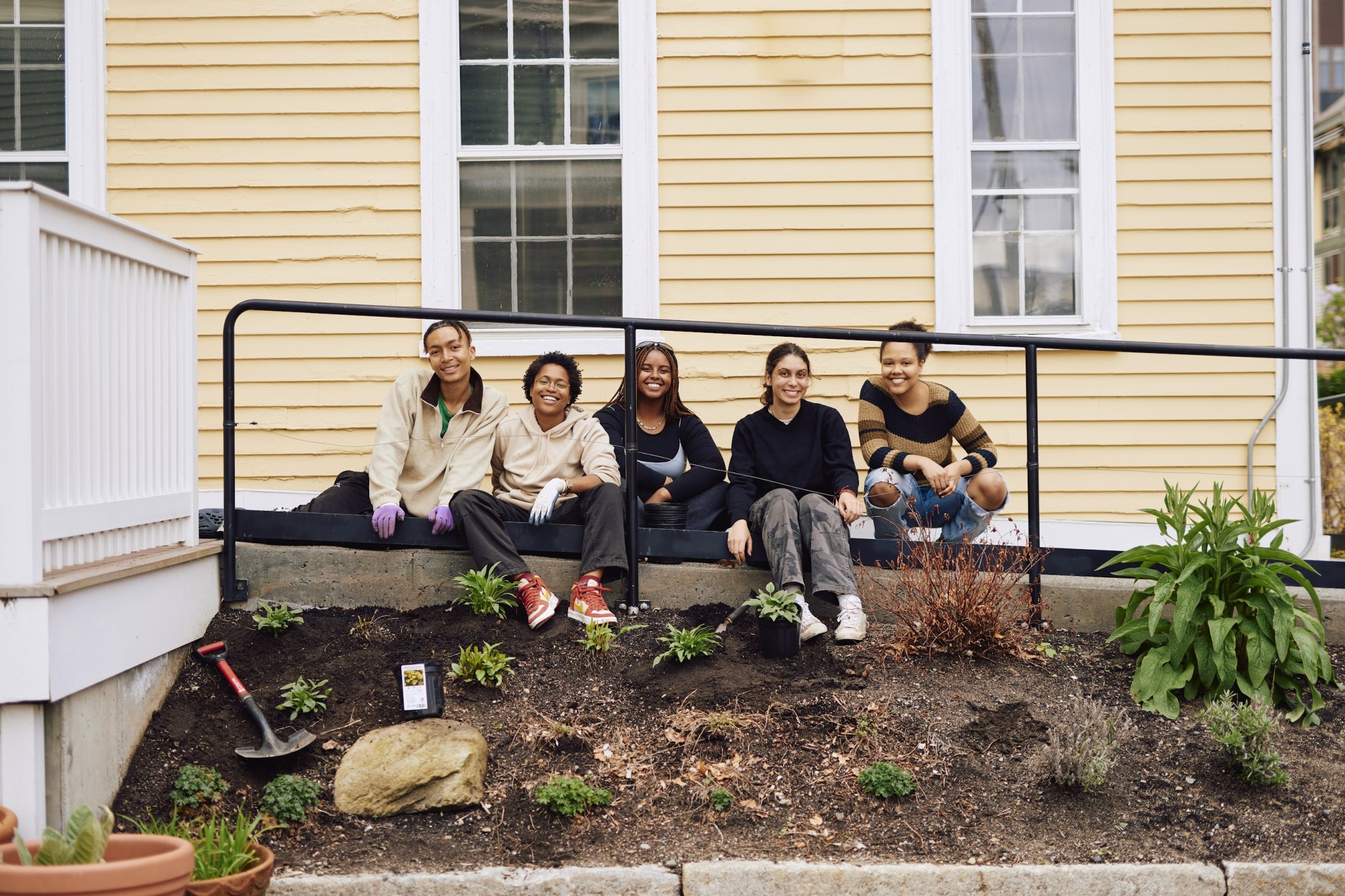
Credit: Rythum Vinoben
During the 2022–2023 school year, the Symbolic Slave Garden Student Caretaker group was created to maintain and grow the Simmons Center Symbolic Slave Garden. The Garden was created almost ten years ago by Professor Geri Augusto and is now guided by Professor Renée Ater and Center Manager Kiku Langford McDonald. Students led the new direction of the garden as well as its reconstruction through dedicated research and physical care. Our approach to the project had to be balanced; we gained technical gardening knowledge of New England systems and knowledge of plants tied to the enslaved African experience in the United States.
Our starting place was researching gardens with a similar mission to represent the varied, rich relationships enslaved people formed with the land. We organized meetings with the From Slavery to Freedom Garden in Pittsburgh, PA and the Sankofa Heritage Garden at Colonial Williamsburg, VA to listen to their experiences and recommendations. We used the gathered knowledge about other practices and programs to inform new research, design, and goals for the future, and also built lasting reciprocal bonds with other gardens for the enslaved. Along the way, a multitude of university and community events — for example the learning series “An Indigenous Perspective on Indigenous Plants” with Lorén Spears — helped build a repertoire of place-based, Indigenous knowledge and the present-day legacies of Black and Indigenous land stewardship. In the same vein, the workshop “Herbalism Practices of Our Enslaved Ancestors” with Coco Dickerson was hosted by the Simmons Center in February 2023. Through these experiences we grew a collection of resource books within the Simmons Center’s Library for this project.
In the end, we decided to select new plants for the garden based on three designations: medicinal, carried, and bioregional. Medicinal plants were foraged and grown by enslaved Africans to provide physical and spiritual care that unreliable plantation medicine could not provide. The Work Projects Administration (WPA) Slave Narrative Collection was a huge source of information about medicinal plant remedies used in different communities. Carried plants refers to plants and practices that were brought to North America by enslaved Africans. Bioregional plants are those that would have been encountered by slaves in New England that are strongly tied to Narragansett livelihoods.
The next step was designing the garden. Students created a recommendation guide to keep track of the maintenance, priorities, and design of the garden going forward. In the spring, we visited two local nurseries to gather the plants. We were able to collaborate with the Brown University Greenhouse to care for seedlings before they were introduced to the garden and with Robert Farizer from University Facilities to learn about the history of the space between its creation and the student group’s start. There were many work days in the spring to get everything planted, to weed the garden, come up with a watering schedule to care for the new additions, and whitewash the garden wall. Throughout the year we have developed a working knowledge of gardening, enslaved gardens, and what it means to represent some of the experiences of enslaved Africans through plants and spiritual objects. We could not be more excited to begin more work on our list of new goals for the next school year.